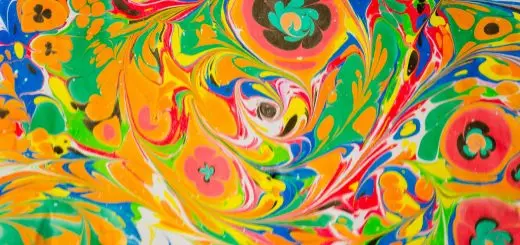Visionary Plants: Rituals and Traditions

Looking for more amazing products? Check out our online store and explore our collection here! Happy shopping!
Before diving in, please note: This post is for informational purposes only. If you’d like to know more about how we approach topics, feel free to check out our friendly Disclaimer Page.
Hey there, amazing readers! 
We’re committed to delivering quality posts, and your support (even just sticking around despite the ads) means everything to us. So, bear with us, and thanks for helping us keep the good vibes rolling. Now, on to the fun stuff!
TRANSLATE BUTTON AT THE END OF THE ARTICLE
A Quick Overview: Introduction to Visionary Plants
Visionary plants, also known as entheogens or psychedelics, have been used for centuries in various cultures for spiritual, therapeutic, and ritualistic purposes.
These plants contain psychoactive compounds that alter perception, consciousness, and mood, leading to profound and often transformative experiences.
The use of visionary plants is deeply rooted in ancient traditions and continues to be a subject of fascination and research in modern times.
This article will delve into the history, cultural significance, rituals, and contemporary applications of visionary plants, shedding light on their role in shaping human experiences and beliefs.
History of Visionary Plant Use
The use of visionary plants dates back thousands of years, with archaeological evidence suggesting their presence in ancient civilizations such as the Aztecs, Mayans, Egyptians, and indigenous tribes around the world.
These plants were revered for their ability to induce spiritual visions, connect individuals to the divine, and facilitate healing.
Shamans and spiritual leaders often served as guides in the use of these plants, leading ceremonies and rituals to harness their transformative powers.
The history of visionary plant use is a tapestry of cultural practices and beliefs that have evolved over time, shaping the identities and worldviews of societies past and present.
Cultural Significance of Visionary Plants
Visionary plants hold immense cultural significance in many societies, where they are regarded as sacred gifts from the earth and tools for spiritual exploration.
These plants are often used in ceremonies and rituals that honor ancestors, seek guidance from the spiritual realm, or facilitate personal growth and healing.
The cultural significance of visionary plants is deeply intertwined with beliefs about the interconnectedness of all living beings and the spiritual dimensions of existence.
For many cultures, these plants are not merely substances but gateways to higher states of consciousness and wisdom that transcend the limitations of the physical world.
Traditional Rituals Involving Visionary Plants
Traditional rituals involving visionary plants are elaborate and meticulously structured ceremonies that follow specific protocols and traditions passed down through generations.
These rituals often take place in sacred settings such as temples, forests, or ceremonial spaces, where participants gather to commune with the plant spirits and the divine.
Shamans or spiritual leaders guide the rituals, invoking blessings, offering prayers, and facilitating the journey into altered states of consciousness.
Participants may engage in singing, dancing, chanting, or other forms of expression to enhance the transformative effects of the visionary plants and deepen their connection to the spiritual realm.
Sacred Plants in Indigenous Cultures
In indigenous cultures around the world, certain plants are considered sacred and revered for their healing and spiritual properties.
These sacred plants are used in rituals, ceremonies, and traditional medicine to connect individuals to the natural world, the spirit realm, and the wisdom of the ancestors.
Examples of sacred plants include ayahuasca in the Amazon rainforest, peyote in Native American traditions, and iboga in African spiritual practices.
These plants play a central role in indigenous cosmologies, serving as bridges between the human and divine realms and guiding individuals on journeys of self-discovery and healing.
Modern Applications of Visionary Plants
In recent years, there has been a resurgence of interest in the therapeutic potential of visionary plants for mental health, addiction treatment, and personal development.
Clinical research studies have shown promising results in using psychedelics such as psilocybin, MDMA, and ayahuasca to treat conditions like depression, anxiety, PTSD, and addiction.
Therapeutic practices involving visionary plants are often guided by trained facilitators in safe and supportive settings, where individuals can explore deep-seated emotions, trauma, and patterns of behavior with the help of the plant medicine.
The modern applications of visionary plants represent a new frontier in mental health care, offering alternative approaches to healing and personal growth.
Shamanism and Visionary Plant Practices
Shamanism is a spiritual practice that involves connecting with the spirit world and working with plant medicine to heal, divine, and transform.
Shamans are spiritual practitioners who serve as intermediaries between the physical and spiritual realms, using visionary plants to access altered states of consciousness and receive guidance from the unseen forces of nature.
In shamanic traditions, visionary plants are seen as allies and teachers that offer insights, wisdom, and healing to those who seek their help.
The practice of shamanism with visionary plants is a deeply spiritual and transformative journey that requires courage, respect, and reverence for the mysteries of the universe.
Ethnobotany and Visionary Plant Research
Ethnobotany is the scientific study of the relationship between plants and people, including the traditional uses of plants for food, medicine, and ritual purposes.
Visionary plants are a key focus of ethnobotanical research, as they offer valuable insights into the cultural, spiritual, and pharmacological significance of plant medicines.
Ethnobotanists work closely with indigenous communities to document and preserve traditional knowledge about visionary plants, ensuring their sustainability and respectful use.
Through ethnobotanical research, scientists uncover the bioactive compounds in visionary plants, explore their healing properties, and contribute to the growing body of evidence supporting their therapeutic potential.
Legal and Ethical Considerations
The use of visionary plants raises complex legal and ethical considerations due to their classification as controlled substances in many countries.
While some jurisdictions have decriminalized or legalized certain psychedelics for medical or religious purposes, others maintain strict regulations that restrict access to these plants.
The underground use of visionary plants for spiritual or therapeutic purposes presents challenges related to safety, quality control, and ethical standards.
As the field of psychedelic therapy continues to evolve, policymakers, researchers, and advocates must navigate the legal and ethical landscapes to ensure the responsible and equitable use of visionary plants for healing and personal transformation.
Health and Safety Concerns
While visionary plants have shown promise as therapeutic tools, they also carry potential risks and side effects that must be considered.
Individuals with pre-existing mental health conditions, such as schizophrenia or bipolar disorder, may be at higher risk of adverse reactions to psychedelics.
Proper screening, preparation, and integration support are essential components of safe psychedelic experiences to minimize the risk of psychological distress or harm.
Additionally, the setting, dosage, and mental state of the individual play crucial roles in shaping the outcome of a visionary plant journey.
Health and safety concerns surrounding the use of visionary plants underscore the importance of informed decision-making, responsible practices, and professional guidance in therapeutic settings.
Future of Visionary Plant Practices
The future of visionary plant practices is marked by growing interest, research, and innovation in the field of psychedelic therapy and consciousness exploration.
As more studies demonstrate the therapeutic potential of psychedelics, mainstream acceptance and integration of visionary plant practices into mental health care are on the horizon.
Non-profit organizations, research institutions, and advocacy groups are working to destigmatize psychedelics, promote education and harm reduction, and expand access to plant-based therapies.
The future of visionary plant practices holds promise for transforming mental health treatment, spiritual growth, and societal attitudes towards altered states of consciousness.
As we navigate the complexities of the modern world, visionary plants offer a pathway to healing, self-discovery, and connection with the profound mysteries of existence.
Conclusion: The Impact of Visionary Plants
In conclusion, visionary plants have played a central role in human history, culture, and spirituality, offering pathways to healing, transformation, and transcendence for millennia.
The rituals, traditions, and practices involving visionary plants reflect the deep-seated human desire to connect with the divine, explore the mysteries of existence, and expand consciousness beyond the confines of everyday reality.
As we continue to research, explore, and honor the sacred gifts of the plant kingdom, we uncover new dimensions of healing, wisdom, and interconnectedness that have the power to shape our individual and collective journeys towards wholeness and harmony.
The impact of visionary plants reverberates through time and space, reminding us of the profound beauty and complexity of the human experience in relationship to the natural world and the unseen realms that beckon us towards deeper understanding and unity.

The Enlightenment Journey is a remarkable collection of writings authored by a distinguished group of experts in the fields of spirituality, new age, and esoteric knowledge.
This anthology features a diverse assembly of well-experienced authors who bring their profound insights and credible perspectives to the forefront.
Each contributor possesses a wealth of knowledge and wisdom, making them authorities in their respective domains.
Together, they offer readers a transformative journey into the realms of spiritual growth, self-discovery, and esoteric enlightenment.
The Enlightenment Journey is a testament to the collective expertise of these luminaries, providing readers with a rich tapestry of ideas and information to illuminate their spiritual path.
Our Diverse Expertise
While our primary focus is on spirituality and esotericism, we are equally passionate about exploring a wide range of other topics and niches 

To ensure we provide the most accurate and valuable insights, we collaborate with trusted experts in their respective domains 
Our blog originally focused on spirituality and metaphysics, but we’ve since expanded to cover a wide range of niches. Don’t worry—we continue to publish a lot of articles on spirituality! Frequently visit our blog to explore our diverse content and stay tuned for more insightful reads.
Hey there, amazing reader! 
Check out our store here and take a peek at some of our featured products below! Thanks for being awesome!












